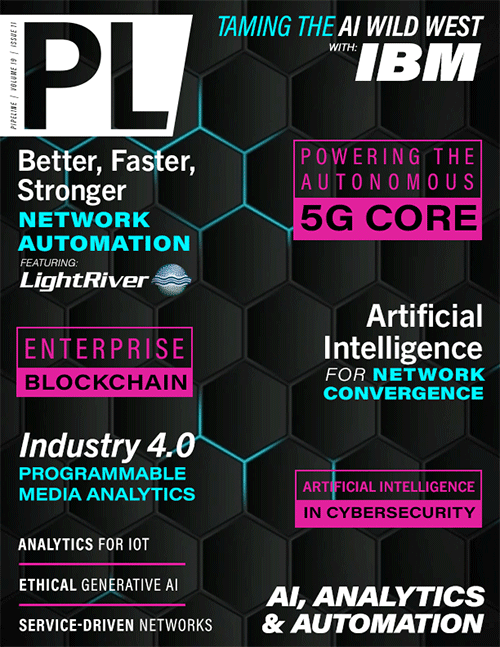Article Index for the September Issue:
September 2023 - AI & Analytics
September 2023 - AI & Analytics
Taming the AI Wild West
In 1848, James W. Marshall allegedly exclaimed, ‚Äúthere is gold in ‚Äėdem hills!‚ÄĚ when he spotted precious flakes of the material as he worked on the water wheel of John Sutter‚Äôs Mill on the American River in what is now Sacramento, California. The discovery sparked what is known today as The California Gold Rush, comprising an estimated 300,000 ‚Äúforty-niners‚ÄĚ that flocked to the West Coast to strike it rich between 1848 and 1855.Yet, despite the widespread excitement, very few actually struck it rich, or even found gold at all‚Ķ¬Ľ read this article
Powering the Autonomous 5G Core
To compete in the 5G marketplace, communications service providers are moving beyond consumers and on to enterprise customers as their target audience. In order to deliver services and experiences tailored to enterprises, however, providers are challenged to glean even more from their 5G networks. We are beginning to reach a point in the communications industry where the fabric of the network is not just programmable, but intelligent. Today, we are partnering with communications service providers (CSPs) to transform data center strategies and ultimately automate operations across the core‚Ķ¬Ľ read this article
Accelerating Network Automation
and Innovation with Middleware
By: Tim Masse
¬Ľ read this article
Unlocking Blockchain Data For Enterprises
By: Jan-Jaap Jager
¬Ľ read this article
AI for Converged Networks
By: Bart Giordano
¬Ľ read this article
Unleashing Industry 4.0: How Programmable
Media Analytics Empowers Innovation
By: Al Balasco
¬Ľ read this article
AI in Cybersecurity: The Good News and the Bad News
The impact of AI on our way of life is accelerating and to no one‚Äôs surprise, AI has become prominent in the opposing realms of cybercrime and cybersecurity. From the beginning of our digital age, the dynamic between these opposing sides has not changed. Each side has always used the capabilities of emerging technologies to achieve their goals. The role of AI in both cyber offense and defense is being played out now. Those responsible for the security of their organizations, from technologists to executives, should stay informed on how AI is being used by their adversaries and how AI can counter these threats‚Ķ¬Ľ read this article
AI and Analytics for IoT
By: Ken Figueredo
¬Ľ read this article
The Ethical Use of Generative AI
By: Mark Cummings, Ph.D., Zoya Slavina, William Yeack, CSE
¬Ľ read this article
The Need for an Agile Services-Driven Network
By: Jonathan Homa
¬Ľ read this article
Letter from the Editor
Artificial Intelligence (AI) is nothing new. It‚Äôs hard to be precise, but I believe Pipeline published its first article on AI for smarter communications in 2016. In the article, we explored how AI was being used by service providers such as AT&T and BT to improve the Customer Experience (CX), by major tech players like HPE, IBM, NVIDIA, and Microsoft, and to potentially create new use cases for IoT, SDN, and NFV. At the time, AI was viewed as a bit of a novelty, with a good measure of skepticism‚Ķ¬Ľ read this article
Telecom and Technology Industry News
September has brought us a real mix of innovative and exciting news stories from across the globe here at Pipeline. This issue‚Äôs theme is AI, Automation, and Advanced Analytics, but we are providing you with a variety of stories from all areas of the technology industry including Cloud, IoT, cybersecurity reports, 5G networks, and more.This month‚Äôs top industry news stories are summarized below. To view current breaking news in real time, visit Pipeline‚Äôs News Center, follow Pipeline on social media, or subscribe to receive our weekly telecom industry news summary‚Ķ¬Ľ read this article

















